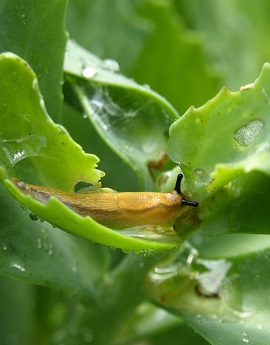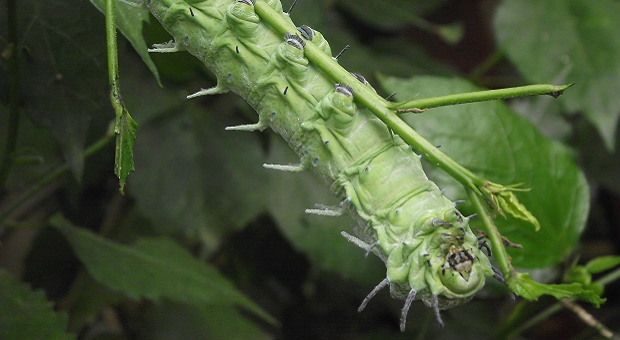You work hard starting your seeds before the frost is off. You delicately and gently transplant your seedlings into larger pots and then you plant your young plants in your garden and wait for them to grow. Then you come out one morning and everything has been eaten down to a nub.
If you’re living in a modern world where you have a grocery store, this situation just really pisses you off, but if you’re in a survival situation, it can mean the difference between eating and starvation. There are several things that you can do to keep predators away from your crop and that’s what we’re going to discuss today.
Build Raised Beds to Protect Your Crops
[adinserter name=”megadroughtusa”]This is without a doubt one of the best ways to keep out smaller predators such as rabbits, ground hogs and gophers or even bugs such as slugs that can harm your precious plants. Especially if you’re still in the planning stages, raised beds are definitely the way to go if you want to keep Peter Rabbit and his band of furry friends from munching your plants all the way to the dirt.
Raised beds are simply larger versions of planters that you put your garden in. You can do many different ones and they actually make your yard look really pretty. You can make them with just about anything including wood, bricks, stone, blocks or even hay bales as long as the sides are at least 18 inches high. Then you fill them with compost or soil and put your plants in them.
Fences Will Protect Your Crops
This is another good way to keep out critters but if your problems are coming from little ones such as rabbits, you need to use chicken wire or chain link. If you want to keep out deer, you’re going to need to make it at least 6 feet tall. Picket fencing or slat board fencing is good too, and it acts as a nice privacy fence too. Just make sure that you build it out of something sturdy so that it lasts. That kind of fencing isn’t cheap but will save you tons of money in wasted crops over time.
Keep in mind while building your fence that gophers and rabbits are excellent little diggers so you need to bury the bottom of your fence at least 6 inches down or all your hard work and money will have been for naught.
Use Mulch to Protect Your Crops from Predators
Many bugs and critters don’t like to walk across mulch, especially if it leaves them out in the open. You can use anything from leaves and straw to wood shavings as mulch to keep animals and bugs off of your plants.
Coffee Grounds Help Protect Your Crops
 Coffee grounds are good for your garden in more ways than one. They add vital nitrogen to the soil that works especially well for acidic-loving plants and many animals, including slugs, cats and even sometimes deer. If you don’t drink coffee, ask one of your local coffee shops to save the grounds for you and just pick them up every couple of days until you have enough.
Coffee grounds are good for your garden in more ways than one. They add vital nitrogen to the soil that works especially well for acidic-loving plants and many animals, including slugs, cats and even sometimes deer. If you don’t drink coffee, ask one of your local coffee shops to save the grounds for you and just pick them up every couple of days until you have enough.
Make Your Own Organic Bug and Critter Deterrent
There are a number of recipes online that are simple to make and won’t hurt you or your pets but WILL keep bugs and bunnies away from your plants. They’re often made with a combination of garlic and hot pepper oil that works really well to deter many predators from your garden. The only thing here is that you’ll need to reapply it after it rains or every couple of weeks so that it stays powerful.
Bloodmeal
This sounds gross but exactly what the name suggests. Bloodmeal is the byproduct of meat packing plants in dried form. Prey animals such as deer and rabbits detest the smell of it and it has the added bonus of being really high in nitrogen. Sprinkle it liberally around your garden and garden crunchers will stay away. Be careful not to put it directly on the plants though, because the high nitrogen content can burn them.
Other Strong “Human” Scents
Scents such as cheap perfume, bars of soap or laundry detergent are good deterrents because the smell is aversive to animals such as deer and rabbits who would like nothing better than to reduce your garden to stubble. Use soaps that have a lot of scent such as Irish Spring and your garden will be safe and grow strong.
Predator Urine
Though you don’t really want to bring in coyotes or foxes to pee on your garden, you can purchase their urine online from specialty hunting and gardening stores fairly cheaply. Sprinkle a couple of drops every few feet and you won’t have to worry about rabbits, squirrels, raccoons, opossums, deer or other garden predators. They’ll be too worried about what wants to eat them to worry about eating your garden!
Plant Repulsive Plants
 There are several different plants out there that deer, rabbits and other garden predators detest the scent of.
There are several different plants out there that deer, rabbits and other garden predators detest the scent of.
Rabbits hate marigolds and both deer and rabbits dislike the scent of daisies, poppies, purple cone flowers and lupine.
Other plants that are good at deterring them are sedum, echinops or any other thorny plants that make access difficult, smelly or painful.
Feed Them Something They Like Better
If all else fails, offer them something that they like even better than your garden. Both deer and small animals like clover, alfalfa, goldenrod, dandelions, and many types of sweet grasses or wildflowers. What they like is somewhat dependent on the critter but you get the idea. Plant these in a wide perimeter around your garden and they’ll be too busy eating the candy to notice the broccoli.
Protecting your garden from predators sometimes feels like more work than actually tending the garden and it’s extremely frustrating to come out and find that the plants that you’ve worked so hard to grow were eaten by critters overnight. Instead of trying just one of these tactics, I’d suggest trying a few of them in combination – the fencing and the marigolds have worked well for me and when I didn’t have a fence, the garlic/pepper juice was pretty effective.
If you have any other ideas about how to keep predators away from your crops, please share them with us in the comments section below – we’d love to hear from you!
This article has been written by Theresa Crouse for Survivopedia.





































































Lots of ‘food for thought’. so to speak. One observation, I have had deer come into camp when I’m gone and EAT soaps like Dial, so I wonder how affective that is. (of course they didn’t come back, but the did have to eat it, to get that result.)
What are your suggestions on turning a sauna into a Fairiday room ?
While you are burying your fence if you go down in an ell shape about a foot and foot and half to the outside you can also keep dogs and hogs out if you use a strong mesh fence wire backed with chicken wire to keep the little critters out.
what about keeping squirrels and birds away from plants? I’ve planted tomatoes and as soon as they get about the size of a small lemon and get red, either the birds or squirrels eat them. I finally just gave up, but I’d love to have my own supply of veggies.